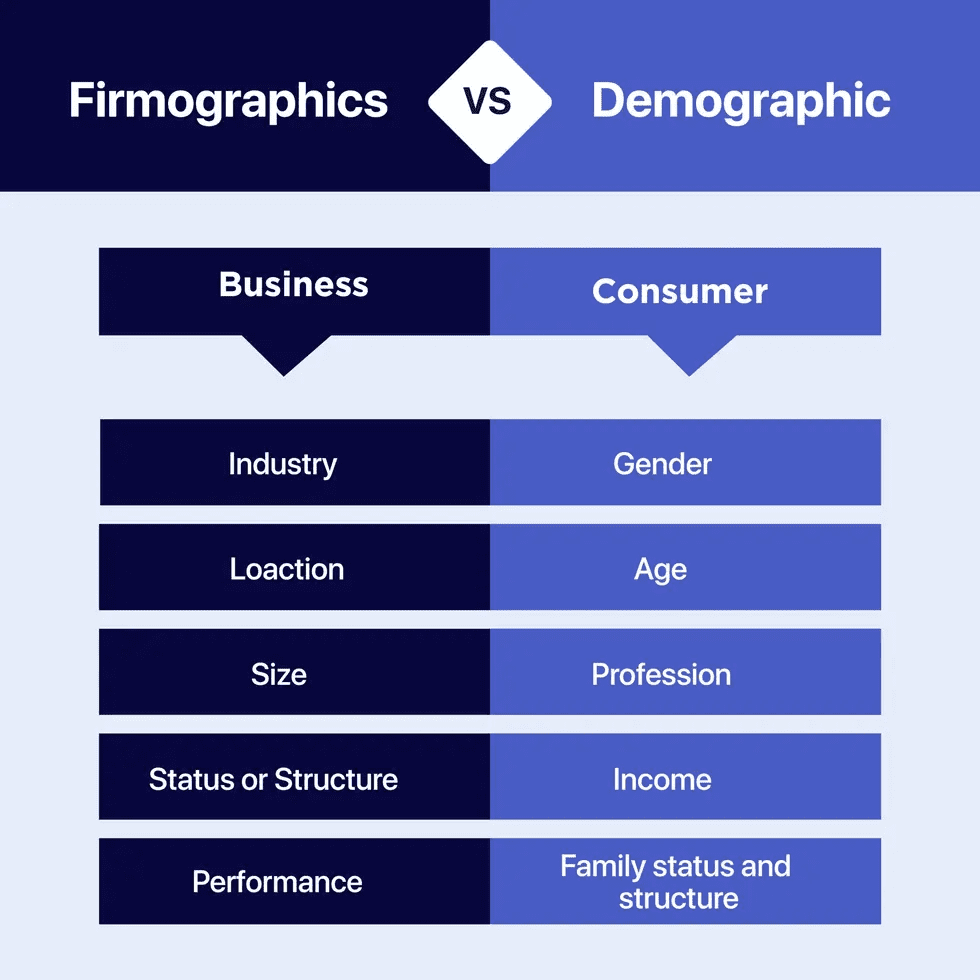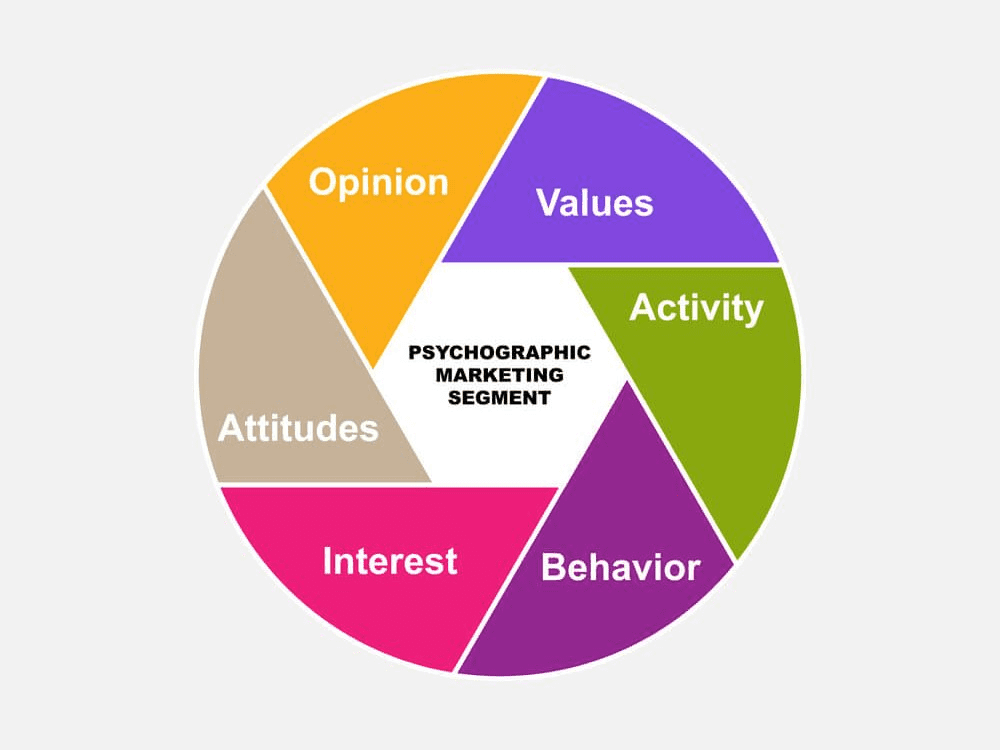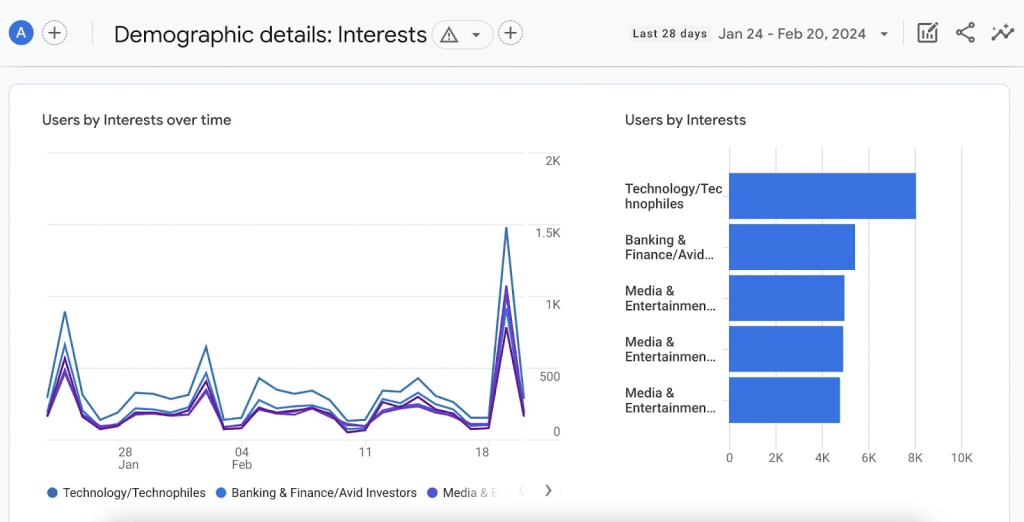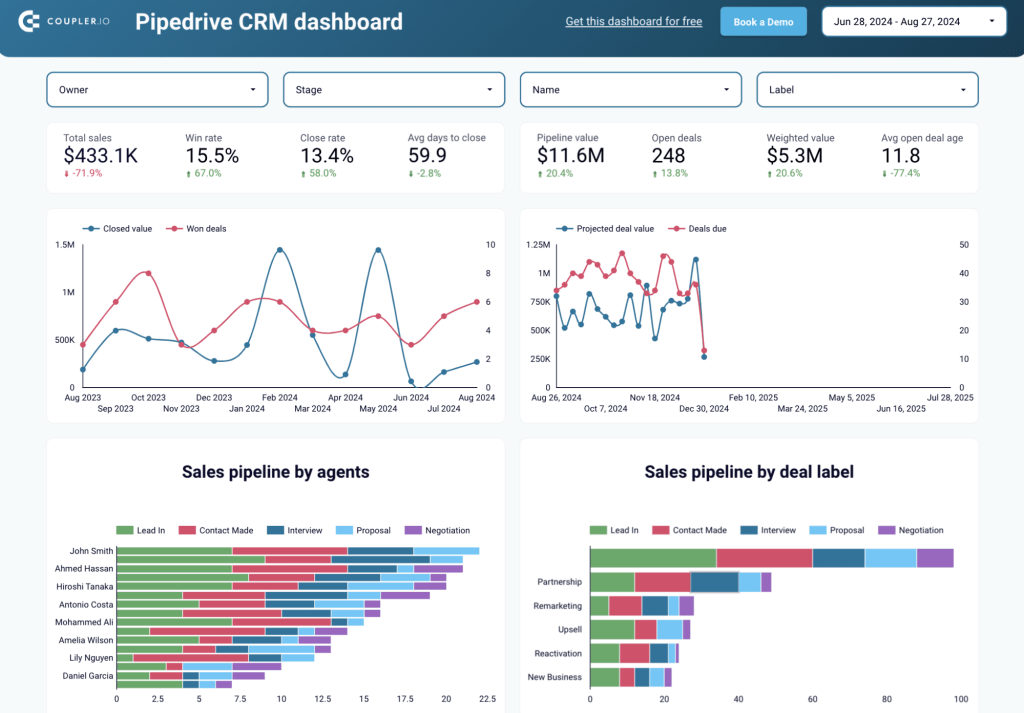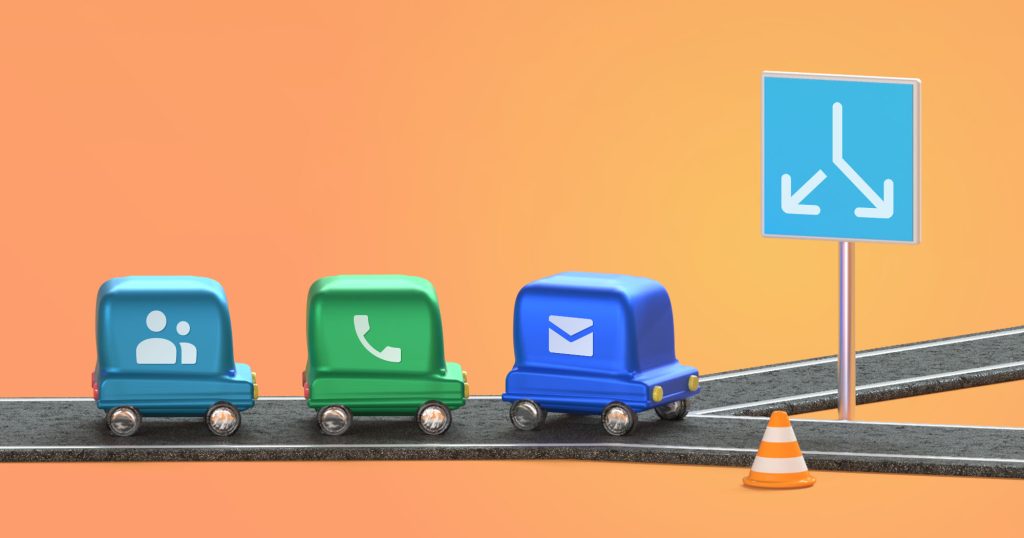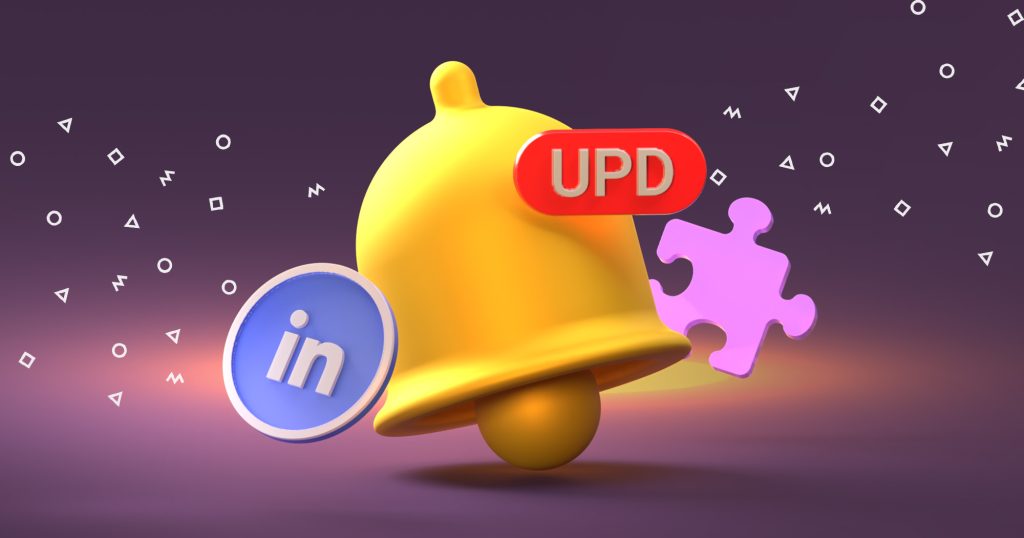In many businesses, 80% of profits come from 20% of customers (Pareto principle). Segmentation helps identify and focus on this crucial minority. In most cases, targeting specific client segments who show interest in your product is more valuable than reaching a larger, generic audience.
Lead segmentation allows you to design more intelligent marketing strategies tailored to the audience’s needs. Such segmentation enhances profitability and marketing ROI. It can also significantly improve cold mailing results.
This guide explores a variety of segmentation strategies that will transform your cold emailing into a series of targeted, high-value interactions.
What is lead segmentation?
Lead segmentation is a strategy that involves dividing potential customers (leads) into distinct groups based on user activities or specific criteria. This process allows businesses to tailor their marketing efforts and communication strategies. The goal of segmentation in cold emailing is to send more personalized and relevant messages to prospects.
Segmentation relies on data analysis to identify patterns and create meaningful groups. Leads are grouped according to various factors such as demographics, behavior, interests, or stage in the buying process. New data and changes in market conditions will influence the process.
Why is lead segmentation important in cold emailing?
Segmentation is crucial for several reasons:
- Message consistency. Segmentation ensures a consistent message across various marketing channels, reinforcing brand perception. This coherence helps build trust and recognition, even in cold outreach.
- Compliance assurance. Segmentation helps ensure that marketing efforts comply with user preferences and legal requirements
- Competitive advantage. Precise segmentation can be the differentiator that sets a company apart from its competitors
- Product insights. Segmentation data can inform product development, helping companies create offerings that better meet specific customer needs. You can use it in cold emails to highlight relevant features.
- Personalization. Segmentation allows for more personalized cold emails, increasing the likelihood of response.
Benefits of lead segmentation in cold emailing
As we consider the overall advantages, we will also explore the specific benefits segmentation gives to cold mailing.
- You can connect with specific target audiences. You can deliver more personalized content to your email audience by separating them into different segments. Examples include identifying new blog subscribers. With segmented lists, it’s easier to conduct A/B tests and optimize email content for specific groups.
- You can enhance cold email engagement. Segmentation gives marketers more information about which types of prospects are most responsive, allowing them to refine their cold email campaigns.
- You can improve satisfaction rates. You will not send someone a conference announcement if they only registered for a beginner course. Segmented messages typically see lower unsubscribe rates as the content is more relevant to recipients. This means a higher chance of maintaining a potential audience in your funnel.
4 core lead segmentation principles
A successful segmentation strategy involves identifying key criteria, gathering and analyzing data, assessing your offerings, and leveraging lead segmentation software to create precise and effective segments.
#1 Define your segmentation criteria
Here are some common ways to segment leads:
- Demographic: Age, gender, education, job title, and income
- Technographic: The technology stack your leads use
- Geographical segmentation: Location
- Behavioral: Website visits, interactions, and engagement
- Lead score: Company size or engagement level
- Sales funnel stage: Social media followers, blog readers, webinar attendees, demo requesters, etc.
Let’s start with two of the most common for cold emailing.
Demographic and firmographic segmentation
Demographic and firmographic methods involve dividing your email list based on the characteristics of individuals and companies. It’s beneficial for highly targeted messaging.
Source: Sloovi
Company size significantly influences needs, priorities, and decision-making processes. You can tailor emails to reflect these differences:
- Small business: a personal touch, relationships, and direct benefits.
- Enterprise: scalability, comprehensive support, and less formal procedures.
Geography also affects business operations and can be crucial in forming effective strategies:
- It‘s better to send emails to arrive during local business hours.
- You need to align content with local business etiquette and practices.
- Translate messages when possible.
Using these demographic and firmographic factors, you can craft deeply personalized messages that resonate with business realities.
Behavioral and psychographics segmentation
This segmentation focuses on how customers interact with your brand and make decisions. The approach allows for highly targeted email campaigns based on observed actions and inferred motivations.
Key behavioral criteria to consider for cold leads include:
| Behavioral criteria | Application |
| Engagement: Email opens, clicks, time spent reading | Adjust email frequency and content type for each segment |
| Website activity: Pages visited, time on site, conversions (reveals interests and stage in the buyer’s journey) | Segment based on content downloads or product page views |
Psychographic segmentation focuses on the leads’ intrinsic characteristics, values, and motivations. It allows marketers and sales teams to tap into specific psychological triggers for each group. By analyzing these behavioral patterns, you can create psychographic profiles.
Source: formplus
The key components of psychographic segmentation include:
- Personality: Understanding individual traits such as openness, conscientiousness, extraversion, agreeableness, and neuroticism can help tailor messaging tone and style.
- Lifestyle: This encompasses how people spend their time, and allocate their resources, informing value propositions.
- Social status: Considering socio-economic factors and aspirations helps in crafting messages that resonate with different social groups.
- Attitudes: Analyzing consumers’ opinions, and emotional responses guides the framing of marketing messages.
- Activities, interests, and opinions (AIO): This trio provides insights into what engages your audience, helping create content that aligns with their passions and worldviews.
By incorporating psychographic segmentation alongside demographic and behavioral data, sales professionals can create highly targeted campaigns that speak directly to the core motivations and values of their audience.
#2 Gather leads data
Each method of data collection offers unique advantages that contribute to a comprehensive understanding of your audience.
| Method of data collection | Benefits |
| Surveys. This method involves collecting data directly from your audience | Survey provides highly relevant and specific information, tailored to your exact needs. |
| Analysis. Behavioral analysis uses analytics tools to monitor and assess user actions, such as website visits, clicks, and purchases. | This method offers real-time, actionable insights that reflect actual user behavior, enabling more precise segmentation. |
| Market research. Market research involves gathering information about industry trends, developments, and competitor strategies. | It helps you understand broader audience dynamics, giving context to your segmentation efforts and aligning them with market conditions. |
| Sales feedback. Sales feedback is gathered from frontline sales teams who interact directly with customers. | This provides practical, firsthand customer perspectives, offering valuable insights that are grounded in real-world experiences. |
Analyzing your site’s visitors with Google Analytics provides basic psychographic information.
You have to avoid pitfalls such as over-segmentation, under-segmentation, using outdated data, and ignoring legal and privacy concerns. By experimenting with different automation tools and techniques, identify what works best for your unique goals and audience.
#3 Segment your lead list
After defining your segmentation criteria and collecting the necessary data, use your cold email software or CRM to implement segmentation. Start by organizing leads into specific segments according to the established criteria. Ensure the segmented leads are based on their stage in the sales funnel — whether in the awareness, consideration, or decision phase.
#4 Implement and automate lead scoring
Start by employing the platform’s custom fields to add specific attributes, allowing you to create more refined segments. You can gain a holistic view of your leads by combining demographic, firmographic, and psychographic data.
Use Reply.io’s tracking features to monitor engagement metrics and create segments based on actions that signal buying intent. Develop detailed profiles of your ideal customers (ICP) and segment your leads according to how closely they match these personas. You can use the tagging system for easy categorization.
Tailor your outreach content and frequency to align with each group. To improve this process, set up automated rules that move leads between segments as their behaviors or attributes change. Regularly update your segments to keep them relevant and accurate, ensuring your lead scoring remains valuable and up-to-date.
Implementing lead segmentation to your cold email strategy
Cold emails without segmentation often fail to demonstrate relevance, getting lost in generic inbound messages. Segmentation sets your outreach apart in a highly saturated marketplace, helping to send the right message to the right person at the right time.
Let’s dive into implementation details.
Create personalized messages for each segment
By tailoring your content according to your leads’ actions or interests, you can implement cold lead segmentation effectively in your email strategy. Here’s how:
- Blog readers: For leads who regularly read your blog, send more in-depth articles on similar topics they’ve shown interest in. This keeps them engaged with valuable content and deepens their knowledge of subjects they care about.
- Webinar attendees: If a lead has attended one of your webinars, follow up by offering additional resources or inviting them to related webinars. You can also send a message with materials, key takeaways, or exclusive offers. This helps to nurture interest and guides visitors further along the customer onboarding.
- Free content downloaders: For leads who have downloaded resources such as eBooks or guides, offer related case studies or whitepapers. This content can demonstrate the practical application of the information they’ve already consumed, moving them closer to a purchasing decision.
- Social media followers: For those who engage with your social media channels, focus on content that emphasizes community involvement and encourages further interaction, deepening their connection with your brand.
- Web searchers: For leads who found you through a web search, tailor your messaging to address problems they were seeking to solve, offering clear solutions.
- Referral leads: For followers referred by others, prioritize building trust by showcasing testimonials and success stories, reinforcing the credibility that brought them to you.
Keep in mind that too much automation can make your email templates feel generic and impersonal, which could turn off potential customers.
Calls to Action (CTA) should be tailored to align with the specific characteristics of each segmented group. This approach ensures that it resonates more effectively with the recipient. Key points to consider:
- Relevance: The CTA should match the recipient’s stage in the buying process.
- Customization: Different segments may require different CTAs. For example, a CTA for a CEO might focus on strategic benefits, while one for a marketing manager might emphasize practical implementation.
- Alignment with segment goals: CTAs should reflect the unique goals and pain points of each segment.
- Language and tone: The phrasing of the CTA should be fitting for the industry, company size, or role of the recipient.
- Actionability: Ensure the CTA is something the specific segment can realistically act upon.
Use CRM and tools to enhance segmentation
To implement and optimize segmentation strategies, marketers can use various tools:
- CRM systems to centralize customer data and manage segments. Reply.io integrates with popular CRM systems to pull additional data for more nuanced segmentation.
- Email automation platforms to deliver personalized emails at scale based on your defined segments.
- Analytics tools to monitor key metrics to assess segmentation effectiveness. For instance, Coupler.io helps to gather data from CRM, email automation, sales, and project management tools, and pull it into spreadsheets, data warehouses, and BI tools. Its data automation and visualization features let you create up-to-date custom reports.
Source: Pipedrive CRM dashboard by Coupler.io
Implement AI and machine learning
Advanced AI and machine learning algorithms now enable real-time segmentation based on user behavior.
The techniques involving predictive analytics can offer substantial improvements:
- Dynamic content: Tailoring email content in real-time based on recipient preferences, and engagement history. It helps to maximize relevance.
- Predictive analytics: By analyzing patterns in large datasets, AI can predict which leads are most likely to convert and suggest optimal outreach strategies.
- AI-powered optimization: Using machine learning to optimize timing, subject line, and personalization, providing content recommendations for different audience segments. As an example,— Medium newsletter.
- Natural Language Processing (NLP): Analyzing the sentiment and intent in customer communications to refine segmentation.
- Automated A/B testing: Continuously testing different email variations and automatically implementing the best-performing versions for each segment.
- Behavior-based triggers: Setting up automated workflows that trigger personalized emails based on user actions or inactions.
AI-driven segmentation allows for hyper-personalization at scale.
Take advantage of Reply.io’s AI-powered lead scoring to prioritize your most promising prospects.
Measuring the impact of lead segmentation
Segmentation also requires tracking key performance indicators and continuously optimizing the strategy. It is an ongoing process that adapts to the audience and marketplace to maintain campaign relevance.
Track key metrics for segmentation success
Key performance indicators and optimization methods play a vital role in this process.
Use these KPIs to track, measure, and optimize your email segmentation cold campaigns:
- Open rates to indicate how well your subject lines resonate with each segment.
- Click rates to measure the engagement and relevance of your email content.
- Conversion rates to show how effectively your emails drive desired actions.
How to use sales metrics to improve cold outreach:


